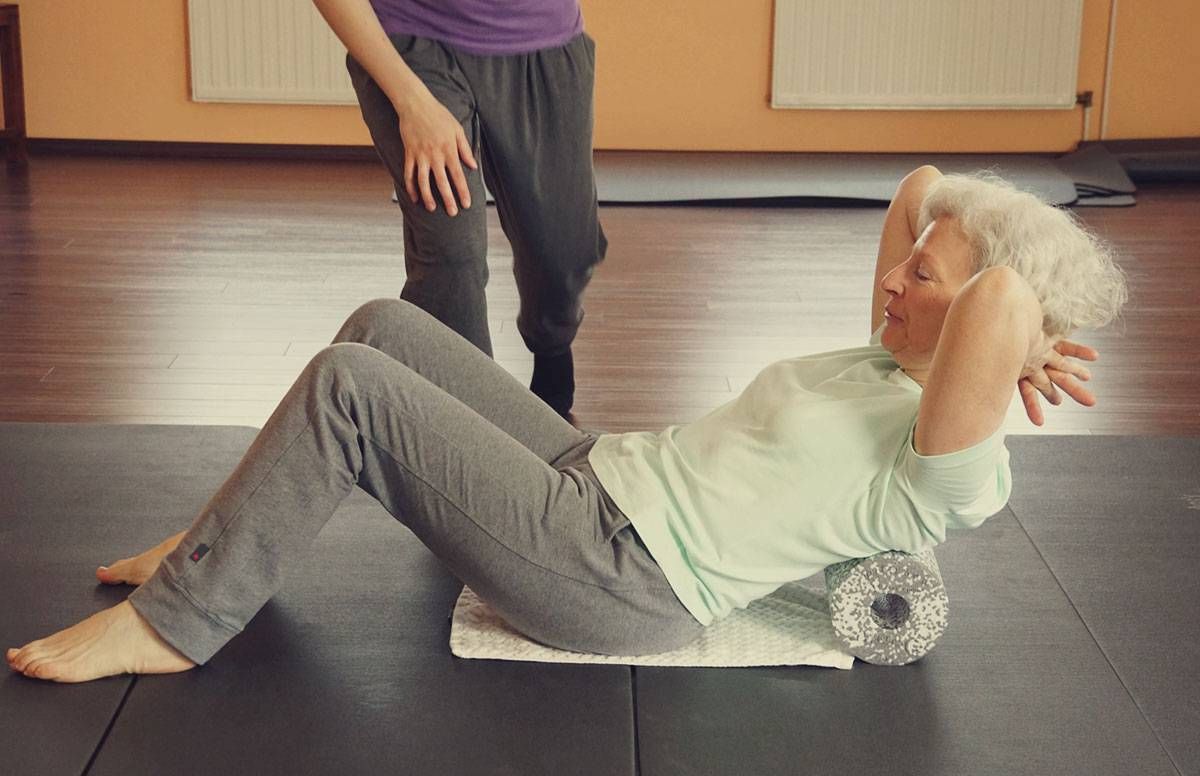Resilient Despite Osteoporosis and 7 Surgeries
One woman's inspiring will to stay positive and active
As my friends push through their mid-60s and into their 70s, I’ve noticed that, along with our children, our work and that perennial favorite, our in-laws, aches, pains and surgeries have increasingly become a staple of our conversation.

If it’s not the arthritis in the neck, it’s the drying skin in search of relief. If it’s not the knee in need of replacement, it’s the hip.
We are all learning for ourselves, in other words, what our parents have been telling us forever: Aging isn’t for sissies.
Neither is mending. The small foot fracture that, in our 20s, barely drew our attention, now hobbles us on crutches for weeks on end. The workout regimen that was disrupted by a seemingly innocent fall is now harder to return to — and when we do, oy, the agony (not to mention the kvetching).
An Inspiration in Not Giving Up
Perhaps that’s why I find Lori O’Connor so inspiring. A retired Wall Street executive, not given to calling attention to herself, she seemed surprised when I asked to interview her about her daunting medical journey — involving seven surgeries over the last eight years.
Dealing with multiple surgeries? Rehabbing from each one? Getting her body back in shape? That’s just what she does. Without complaint. Without anger. Certainly, without a trace of self-pity.
When I first met Lori in July 2012, she was 55 and just another (admirably trim) body on one of the seven reformers (exercise equipment) used for group classes at our Pilates studio.
"Even as I was dragging myself around, I didn't want to give up on my determination."
I was a newbie who had to work hard to keep up; she was a nine-month veteran who moved through the paces with agility and confidence.
At the time, I hadn’t a clue — and Lori showed no sign — that 14 months earlier, she’d tripped and fractured her left kneecap. The resulting surgery had threaded a wire through her patella to help her bones mend.
Over the next 19 months, she was such a regular presence at the studio, it stirred notice when she didn’t show up for class one day. From the studio owner, we learned she’d fallen again. This time, she’d skidded on ice and injured her right kneecap. And she not only fractured a patella, she shattered it.
Six weeks post-surgery, Lori was back in class, now with two wired kneecaps.
When that second wire poked through her right kneecap, she disappeared for another surgery to repair it. And when that repair proved uncomfortable, she disappeared for another operation to have the wire removed. That made for three surgeries in one year on her right knee.
An Explanation for So Many Broken Bones
Yet after each surgery, Lori returned to class within about six weeks. Each time, she fielded our breathless questions matter-of-factly, then got on with the business of getting her body back in shape. To cope with the frustration and pain, she set goals that extended beyond attending her physical therapy sessions.
“As soon as I could go for a follow-up visit to my doctor,” she says, “my first question was always, ‘When can I go back to Pilates?’”
Come November 2017, Lori again disappeared from the reformer lineup. This time, the news was really bad: She had snagged her foot in a tiny road hole and fallen, breaking her right thighbone in four places. The resulting surgery would require six months of mending and physical therapy before she could resume Pilates.
Still hobbling and still in pain, she was back in class three months later when her doctors determined that she had an “ununited fracture.” Her femur, in other words, had failed to mend. Packed off to consult an orthopedic specialist, Lori learned that, contrary to all the MRIs (magnetic resonance imaging scans) that had indicated she was dealing with a relatively mild bone condition called osteopenia, she was suffering from full-blown osteoporosis.
Now, at least, she had an explanation for why her bones kept breaking.
Did the prospect of another surgery sideline her? Nah. “Even as I was dragging myself around, I didn’t want to give up on my determination,” she says. “I thought the Pilates would keep me stronger for the surgery.”
She continued to take classes right up until the operation in February 2019. This one, which involved the removal of a piece of her pelvis and the insertion of a permanent metal plate running from her hip bone to the middle of her thigh, required some adjustments after she was sprung from the hospital 10 days later.
Finding Ways to Cope During Healing
“I had to have a hospital bed on the first floor of my house because I couldn’t do stairs,” she says. “I also had to exercise at home because I couldn’t drive.”
To help her cope, Lori set target dates to get rid of the hospital bed, then the walker, then the cane. “I’m an optimist,” she says. “I always set goals so I can move through and not get stuck.”
Her limited mobility also compelled her to tap into friends and professional services for dog-walking, food-delivery and transportation. “I’m single and extremely independent,” she says. “It was difficult to ask for help.”
When she returned to class three months after the surgery, she was still navigating with a cane. A month later, she disappeared again. The gasp in our Pilates class was audible when we learned that she had fallen backwards down some stairs while carrying a basket of laundry and was again facing surgery.
Four months would pass before she returned to class. “That fall was a pretty big blow,” she admits. “I injured the only remaining piece of the femur that hadn’t been broken.”
Now, as Lori looks ahead to an eighth surgery, this one to remove some of the temporary hardware in her femur, her spirit remains unbroken. She attends Pilates classes (sans cane) three to four times a week. She refuses to be discouraged by the metal in her hip that will forever preclude her from participating in exercises that require students to lie on their right side.
“Frustration is in my repertoire, but not pity,” she says. “My mindset is that I have no option but to continue making my body stronger and address the bone deterioration. I’m going to get through this and get stronger.”
When I ask if she has any advice for others who are grappling with health issues, she offers a gem as canny and grounded as she is. “In any healing process, set goals and keep realistic timelines,” she says. “Celebrate if you achieve those goals — but don’t beat yourself up if you don’t."


